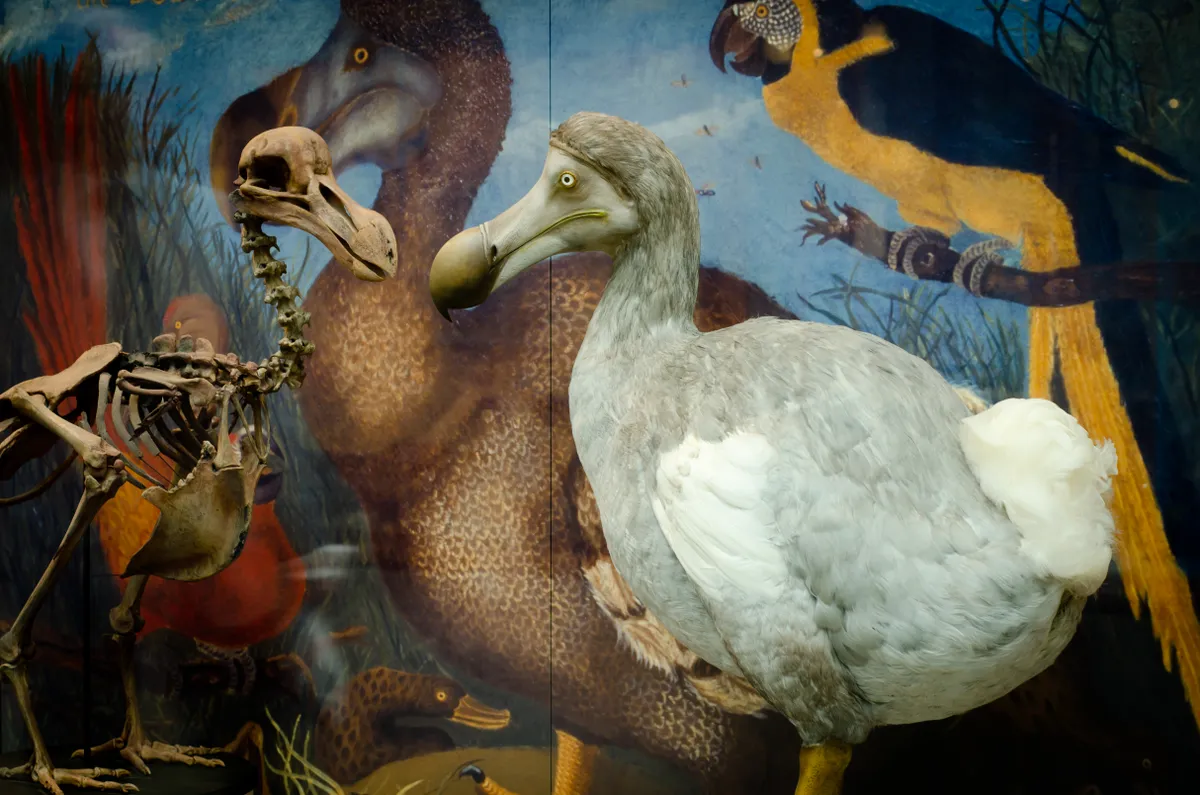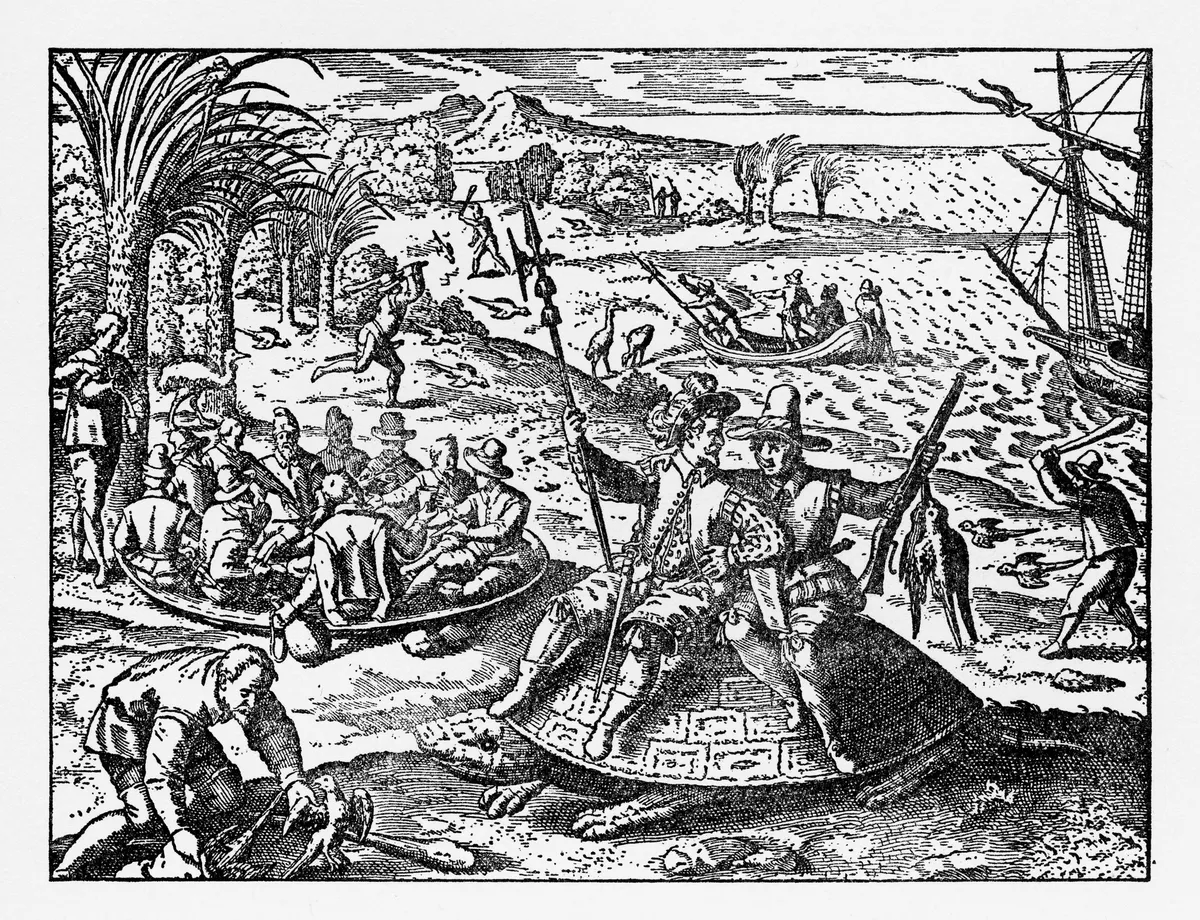1
Where did dodos live?
Dodos were endemic to the island of Mauritius in the Indian Ocean. This means that they were found there and nowhere else.

2
Why couldn't they fly?
The dodo is descended from birds that could fly, and other extant species that are in the same family Columbidae, which includes pigeons and doves, can fly.
So why was the dodo confined to two legs? The most likely answer is simply because it didn’t need to. As natives of an island with no predators the ancestors of the dodo no longer needed flight as an adaptation to escape.
Flying is energetically costly, so over time it was not favoured by natural selection, and flightlessness was passed on to subsequent generations.

3
When did they go extinct?
The last confirmed sighting of a dodo was in 1662, by which time they were very rare. They probably persisted for a while after this date though, and scientists have used statistical analysis to estimate the actual year of extinction as 1690.
4
Why did they go extinct?
Due to their inability to fly and lack of previous exposure to predators dodos were at risk as soon as Dutch sailors landed on their island in 1598.
Contrary to popular narratives that these sailors hunted and ate the birds into extinction, it is unlikely that it was the people themselves that caused the decline, but the animals they brought with them. These included ship-rats and domestic dogs, cats, and pigs.
These invasive species outcompeted the dodos for food and predated on their eggs, leading to decline in numbers and eventually complete loss of the species for ever.

5
What can we learn from the tale of the dodo?
The loss of the dodo, a charismatic and culturally significant species, is a poignant example of the damage human activities can do to animals, particularly isolated island dwellers.
Island species are especially at risk as they are often endemic, evolutionarily distinct, and vulnerable to new disturbances. One modern parallel to the dodo is the kakapo, another flightless island bird that is at risk of extinction due to invasive domestic animals.
Preventing the spread of novel invasive species is one way of protecting our fascinating island fauna. Sadly this lesson is too late for the dodo.

Main image: Illustration of a dodo in black and white. © Nastasic/Getty
